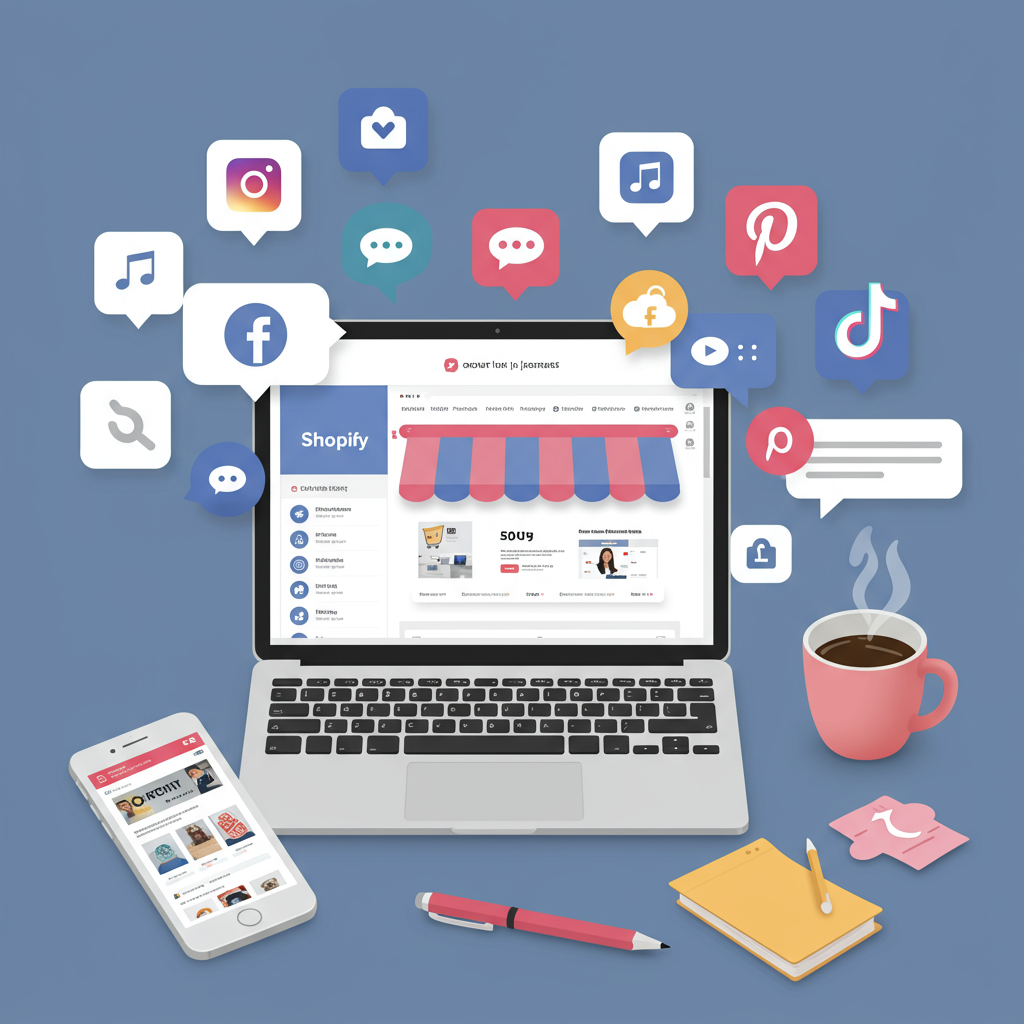Unlock Growth and Drive Sales with Strategic Social Media Campaigns
As a Shopify merchant, you’re constantly looking for ways to expand your reach and drive more sales. In today’s digital landscape, social media isn’t just an option; it’s a necessity. It’s where your customers spend their time, and it’s where you need to be to connect with them authentically.
I’ve seen countless businesses transform their online presence by leveraging the power of social media advertising. It’s not just about posting pretty pictures; it’s about strategic engagement, targeted campaigns, and understanding the nuances of each platform.
My goal with this article is to walk you through the essential steps and provide actionable tips that you can implement right away to boost your Shopify store’s visibility and conversions through social media. Let’s dive into how you can master this crucial aspect of e-commerce.
First and foremost, before you even think about which platform to use or what kind of ad to run, you need to deeply understand your target audience. Who are they? What are their demographics, interests, pain points, and online behaviors?
Creating detailed buyer personas will be incredibly helpful here. Think about their age, location, income level, hobbies, and even the types of content they consume. This foundational knowledge will inform every subsequent decision you make.
Once you know who you’re talking to, choosing the right social media platforms becomes much clearer. You don’t need to be everywhere; you need to be where your audience is most active and receptive to your message.
For instance, if you sell fashion or home decor, Instagram and Pinterest are likely goldmines due to their visual nature. If your products appeal to a younger demographic, TikTok might be your primary focus. B2B products might find LinkedIn more effective.
Now, let’s talk about content strategy. Your organic content should be just as compelling as your paid ads. It builds brand loyalty and trust. Think about a mix of product showcases, behind-the-scenes glimpses, customer testimonials, and educational content.
High-quality visuals are non-negotiable. Invest in professional photography and videography. Your product images on social media should be stunning, clear, and consistent with your brand’s aesthetic. Remember, people scroll quickly, so you need to grab their attention instantly.
Don’t forget the power of storytelling. People connect with stories, not just products. Share your brand’s journey, the inspiration behind your products, or how your products solve a problem for your customers. This humanizes your brand.
Moving onto paid advertising, this is where you can truly scale your efforts. Social media ad platforms offer incredibly precise targeting options, allowing you to reach exactly the right people who are most likely to convert into customers.
Start with a clear objective for each campaign. Are you aiming for brand awareness, website traffic, lead generation, or direct sales? Your objective will dictate your ad format, bidding strategy, and creative approach.
Budgeting is another critical aspect. I always advise starting small, testing different ad sets, and then scaling up what works. Don’t blow your entire budget on one untested campaign. A/B testing is your best friend here.
When crafting your ad copy, be concise, compelling, and include a clear call to action (CTA). Tell people exactly what you want them to do: “Shop Now,” “Learn More,” “Sign Up,” etc. Urgency and scarcity can also be powerful motivators.
Let’s touch on some platform-specific tips. For Facebook and Instagram, leverage their robust ad managers. Use lookalike audiences based on your existing customer data or website visitors to find new potential customers who share similar characteristics.
Instagram Shopping features are a must for Shopify merchants. Tag your products directly in your posts and stories, making it incredibly easy for users to click through and purchase without leaving the app.
Pinterest is unique because it functions more like a visual search engine. Optimize your pins with relevant keywords in descriptions and titles. Use rich pins to automatically pull product information from your Shopify store.
For TikTok, authenticity and short-form video content reign supreme. Don’t try to be overly polished; embrace trends, use popular sounds, and create engaging, entertaining content that feels native to the platform. User-generated content (UGC) performs exceptionally well here.
Measuring your success is paramount. Don’t just look at likes and comments. Focus on key performance indicators (KPIs) that align with your objectives: click-through rates (CTR), conversion rates, cost per acquisition (CPA), and return on ad spend (ROAS).
Integrate your Shopify store with your social media platforms and use tracking pixels (like the Facebook Pixel) to gather valuable data. This data will allow you to optimize your campaigns, retarget visitors, and understand your customer journey better.
A/B testing should be an ongoing process. Test different ad creatives, headlines, CTAs, audience segments, and even landing pages. Small tweaks can lead to significant improvements in performance over time.
Retargeting is a highly effective strategy. Show ads to people who have already visited your Shopify store but didn’t complete a purchase. Remind them of the products they viewed or offer a small incentive to encourage them to come back.
Encourage and leverage user-generated content. When customers share photos or videos of your products, ask for permission to repost them. This builds social proof and trust, often outperforming brand-created content.
Finally, remember that consistency and patience are key. Social media marketing is not a one-time effort; it’s an ongoing process of learning, adapting, and optimizing. Don’t get discouraged if your first few campaigns aren’t perfect.
Keep an eye on emerging trends and new features on social media platforms. The landscape is constantly evolving, and staying updated will give you a competitive edge.
What do you think about this article? I’m always eager to hear your thoughts and experiences with social media advertising for your Shopify store.
By implementing these strategies, I’m confident you’ll see a positive impact on your Shopify store’s growth. Social media is a powerful tool; use it wisely, and watch your business flourish.






